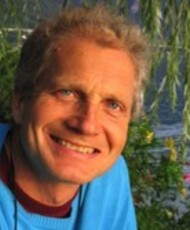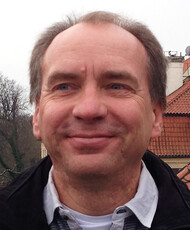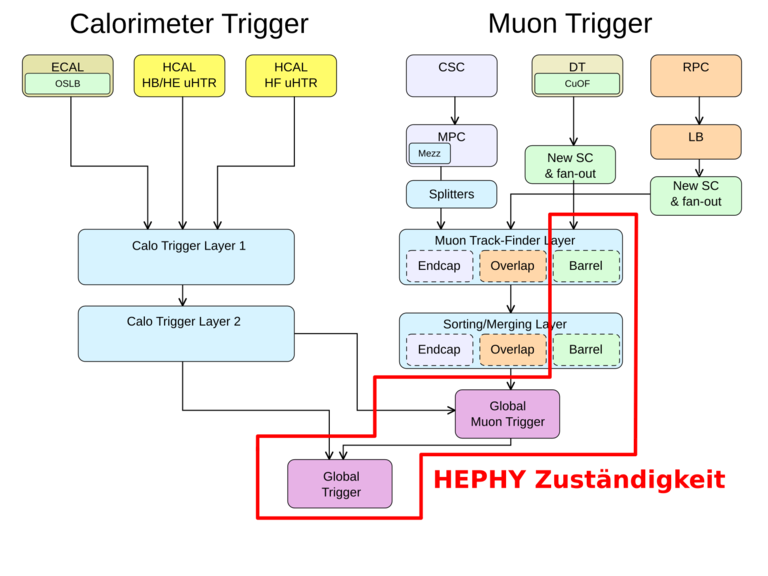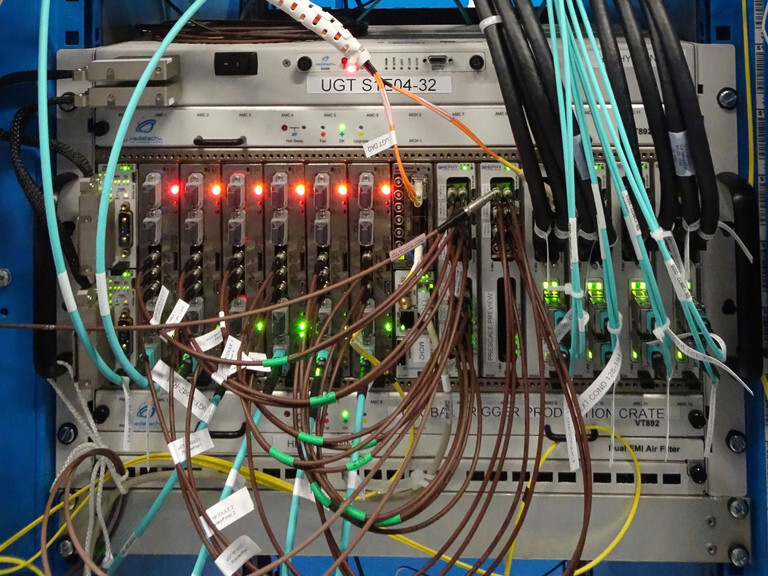The CMS Trigger Group of the Institute des Instituts is involved in the Level-1 Trigger system of the CMS experiment at CERN. At the Large Hadron Collider (LHC) proton bunches collide 40 million times per second, producing about 600 million collisions (event). The trigger system selects only those collisions from the huge amount produced that are interesting for the study of expected and unexpected new physical phenomena at high energies.
CMS Trigger

Claudia Wulz
Group Leader CMS Trigger+43 (1) 51581 - 2842

Manfred Jeitler
Scientist+41 22 76 - 76307

Natascha Krammer
+41 22 76 - 68801

Ivan Mikulec
Scientist+43 (1) 51581 - 2843
Other members
The Level-1 Trigger, a specially developed electronics system analyses on-line each collision, every 25 nanoseconds, and decides if it should be discarded or accepted for further analysis. The so-called High Level Trigger consists of fast analysis programs running on a computer farm. The Level-1 Trigger reduces the 600 million collisions to at most 100.000 per second, the High Level Trigger reduces this rate further to a few hundred events per second, which are stored for later analysis.
Without the trigger electronics developed by our group no single collision could be centrally recorded in CMS!
The Global Trigger Upgrade
The Trigger Group currently works on the upgrade (Phase I Upgrade) and commissioning of the following systems:
- The Barrel Track Finder reconstructs muon tracks in the central region of CMS.
- The Globale Muon trigger compares results from all muon detectors, eliminates duplicate muons and compensates for differences of the measurements of geometrical origin.
- The Global Trigger takes the decision to accept or reject an event.
In the framework of the Phase I Upgrade we are responsible for the construction of the Barrel Track Finder, the Global Muon Trigger and the Global Trigger. In addition, we develop software for all components. The University of Ioannina, the Autonomous University Madrid and INFN Bologna collaborate on the Barrel Track Finder. The Global Muon Trigger is supported by CERN.
Completed Projects
Previously the group developed and constructed or implemented the following hardware and software systems ("legacy trigger system"):
- The Drift Tube Track Finder reconstructs muon tracks from the measurements of the drift tube chambers.
- The Global Muon Trigger compares results from all muon detectors, eliminates duplicate muons and compensates for differences of the measurements of geometrical origin.
- The Global Trigger takes the decision to accept or reject an event.
- The zentrale Triggerkontrollsystem electronically controls the data taking.
- The Trigger Supervisor software controls and coordinates all trigger systems.
The Global Trigger, the Global Muon Trigger and the central Trigger Control System of the "legacy system" were completeley designed and built by our group, in collaboration with the Department of Electronics. The major parts of the Drift Tube Track Finder were also developed and constructed by our group. The Autonomous University Madrid and INFN Bologna contributed as well. The Trigger Supervisor was proposed by our group and its base version was fully developed by us. Further developments werde made mainly in collaboration with CERN.

